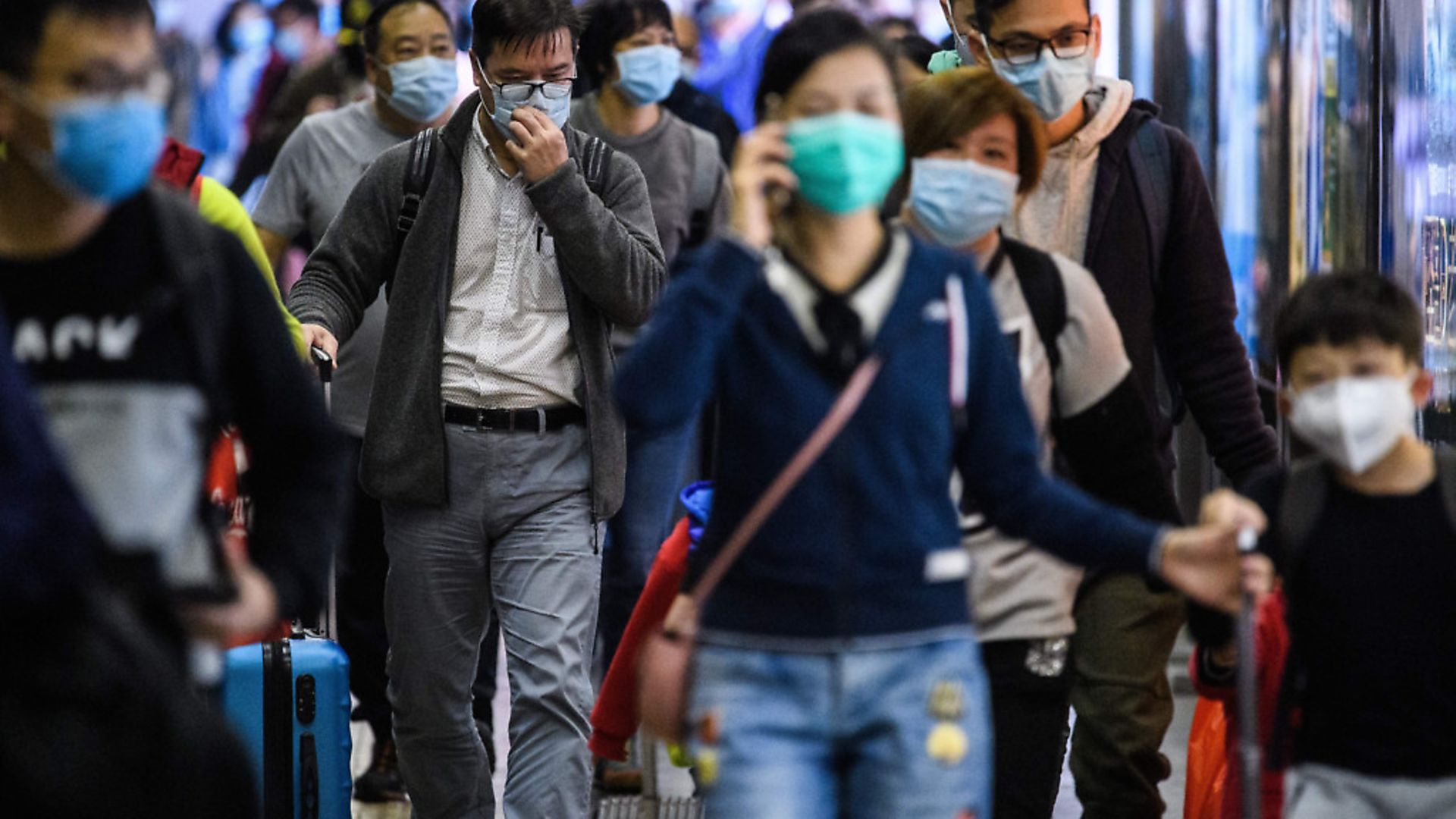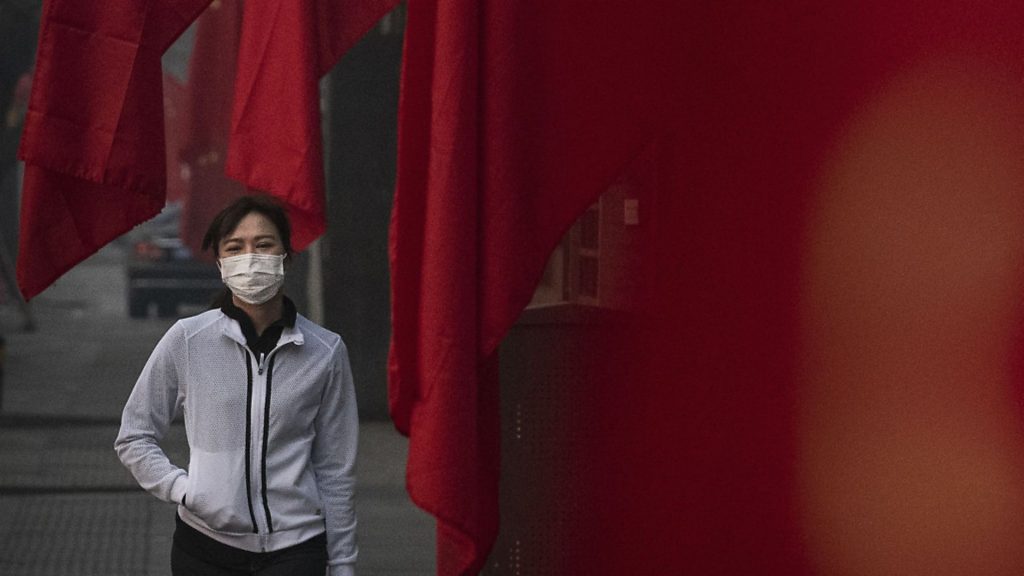
Coronavirus is a health emergency – and so much more. From travel to commerce, CHRIS NEWELL and PETER HOSKIN investigate the ripple effect on the global economy.

COVID-19, the coronavirus that’s spreading around the world, has infected almost 80,000 people and killed around 2,500. But its effects are even more drastic than those grim tolls suggest. Global conferences have been cancelled. Offices and factories shuttered. Travel routes suspended. The virus has already done a lot to dampen the economic prospects of individuals, businesses, regions and even countries. These financial effects will be felt throughout 2020, maybe even beyond.
But if you want to start grappling with these costs now – in real-time – look to any of China’s main airports. They are normally among the busiest in the world: by itself, Beijing Capital International Airport receives about 100 million passengers a year, dispatching them to almost 150 international destinations and just as many domestic ones. But now they are places of terrible inactivity. In the month to February 13, the number of departures from Chinese airports fell by 87%, from about 14,250 to 1,900.
This has had some weird, temporary consequences. According to the Official Aviation Guide, one of China’s middling airlines, Spring Airlines, technically became the country’s largest airline simply because it hadn’t cut its capacity by as much as the others.
But, mostly, the consequences are momentous. The suspension of China’s airline industry is a break in one of the biggest recent trends in global travel. Over the past decade, as the country’s middle class has grown in both size and wealth, the number of outbound trips people have made from China has almost tripled.
No other country made more trips than the 150 million made by Chinese tourists in 2018. And none spent more than the Chinese tourists’ collective $265 billion.
It’s not just sheer quantity that makes China’s tourists such an imposing economic force. It’s their temperament, too: they just seem to want to spend more than other tourists. In 2018, significantly fewer Chinese people visited Britain than American people, but they each spent almost twice as much. By curtailing travel to and from China, the coronavirus is also diminishing the amount of money that flows into economies around the world.
Shopkeepers will, quite literally, be left counting the costs. In 2017, the upmarket London department store Harrods revealed that Chinese people had overtaken Brits as their biggest customers, spending more than £200 million in that year alone – or more than 10% of Harrods’ annual revenue. The globetrotting classes are in the market for designer items that either aren’t available back home or, given the pervasiveness of China’s counterfeit economy, could be fakes. But now, the globetrotters are being forced to stay put. Bicester Village, a luxury shopping outlet outside of Oxford, has revealed that the number of Chinese visitors fell by 85% in the first two weeks of February.
Others are reliant on Chinese movement in different ways. The Japanese prime minister, Shinzo Abe, wants 40 million people to visit his country this year, the year of the Tokyo Olympics – a target that seems ever more distant after the number of fliers from China to Japan dropped by almost 250,000, or 75%, in the first month of the coronavirus outbreak. Meanwhile, what about the half a million international students who study in China? Or the million Chinese students who study internationally? Much like China’s tourists, its migratory students are now the biggest cohort in the world.
China doesn’t just export people, in the form of tourists and students. It also exports goods. Although the “Made in China” tag has been familiar to Western consumers for decades, it has become far more ubiquitous in recent years. In the five years encompassing 2003 to 2007, the country accounted for 15% of all global exports of “computer, electronic, and optical products”. A decade later, that proportion had risen to 28%.
This trend has made China a crucial part of other countries’ economies. Since 2004, it has more than doubled its exports of goods to the United States – and surpassed Canada as America’s most significant trading partner. This relationship was already under threat from Donald Trump’s tariffs on Chinese imports; now it also has a virus to contend with.
Again, the effects won’t just be seen on spreadsheets, but also felt on high streets. Major American retailers such as Walmart and Target import anywhere between a quarter and a third of their wares from China. Others, such as Apple, have outsourced large parts of their supply chain to Chinese factories – and then wait for the goods to arrive at US ports. The tech giant is already warning that “worldwide iPhone supply will be temporarily constrained” because of the disruption caused by coronavirus, with the result that it doesn’t expect to meet its previous revenue forecasts for the start of this year.
Apple aren’t the only ones with warnings. In its latest twice-yearly Monetary Policy Report, published at the beginning of February, the US Federal Reserve said that the coronavirus “presented a new risk to the [economic] outlook”. The London-based analysts Capital Economics have predicted that $280 billion will be wiped from the global economy in just the first quarter of 2020.
There are some, however, who are more optimistic. They point to the SARS outbreak that began in China in 2003 and to its more limited financial effects. Indeed, in the quarter that outbreak really took hold, China’s growth was still higher (at 9.1%) than it was in the same quarter the year before (8.8%), and it was soon back up to 10%.
But now is not then. China’s economy is far more interwoven with the rest of the world than it was in 2003 – and it’s also in a more vulnerable condition. The days of 10% growth are past, even according to the state’s rather hopeful official statistics. Last year, before coronavirus struck, the economy grew by 6.1% overall, the slowest pace for almost 30 years. And it doesn’t help that Hong Kong, in all-round defiance of Beijing, has already entered recession.
Of course, we are still waiting for the growth figures for the first quarter of this year, but there are some proxies in the meantime. The Australian dollar is traditionally regarded as one of them because of Australia’s proximity to the Chinese economy, and it has fallen to its lowest levels since the financial crisis of 2008.
Or there’s always the emptied-out departure lounges and flight schedules of China’s airports. No-one knows how swiftly or thoroughly coronavirus will spread around the world, nor how many lives it will claim in the process. But we can see the fear that precedes it, and the material effects of that fear. Your flight is no longer ready for departure.









